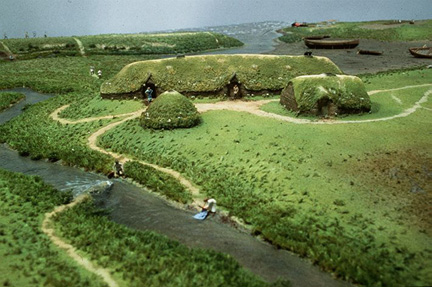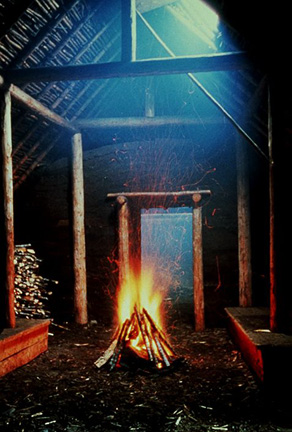Discovering America: Norsemen Explorers & Settlers - The Vikings
In the 10th century Norse sailors called Vikings explored and settled areas of the North Atlantic, including northeastern parts of North America; however archaeological evidence has shown the Norsemen went as far as the Kensington, Minnesota.
According to the Sagas of Icelanders, Norsemen sailed from Iceland and settled in Greenland in the late 900s and while settlements in Greenland lasted 500 years, on mainland North America settlements didn’t last long, either by disease or attacks by native tribesmen of the region. [I] Also, it is thought that the Little Ice Age of the medieval period of history may have caused farming problems and thus starving population that may have caused the settlers to leave or die off. [II]
Other Icelandic sources, like Eirik the Red’s Saga and the Saga of the Greenlanders describe settled areas of the Norsemen.
Leif’s brother, Thorvald Ericson sailed with a crew of 30 men in 1004 to Newfoundland and spent the winter at Leif’s camp. When spring arrived, Thorvald attacked nine local natives and one escaped to bring back a large force that killed Thorvald during the attack.

Another expedition occurred in 1009 headed by Thorfinn Karlsefni [III] who had three ships with livestock and 160 settlers of men and women. [IV]
Settlements were established in continental North America in order to utilize the natural resources like furs and lumber. The Norwegian coin called the Maine Penny (1066-1080) has been found in Native American archaeological sites in the state of Maine, which shows that the Norse and Native Americans traded; as well as other Norse artifacts being found in several Inuit communities. [V]
Traditionally for centuries, Christopher Columbus had been given the credit for the discovery of the Americas, which he had thought was the Indies, thus calling the American natives, incorrectly, Indians, until the 1800s. First archaeological evidence was in the form of tablets or stones carved with Nordic runes, of which were incorrectly considered hoaxes; despite the farmer who discovered the runes within the roots of an old tree on his farmland had no knowledge of runes, ancient or otherwise. It becomes known as the Kensington Runestone, [VI] mostly considered a hoax because it was believed that Norsemen never ventured farther than the shores of Newfoundland.
The following images are courtesy of the University of Pittsburgh:
Tribute to the Norsemen: The Viking Sagas [1995]
Poets Henry Wadsworth Longfellow (Skeleton in Armor) and John Greenleaf Whittier (The Norsemen) provide tales of the Vikings in New England.
ENDNOTES:
[I] The Norse discovers of America, the Wineland saga by Gathorne Hardy and Geoffrey Malcolm; 1920; Oxford Clarendon Press.
[II] The Voyages of the Northmen to America by Edmund F. Slafter (1877); reprinted 1939 and 1983.
[III] The Norsemen by Eric Oxenstierna (1965); NY.
[IV] Some historical accounts state the number of settlers were 250.
[V] Markland and Helluland; Smithsonian National Museum of History; archaeological page.



0 Response to "Discovering America: Norsemen Explorers & Settlers - The Vikings"
Post a Comment